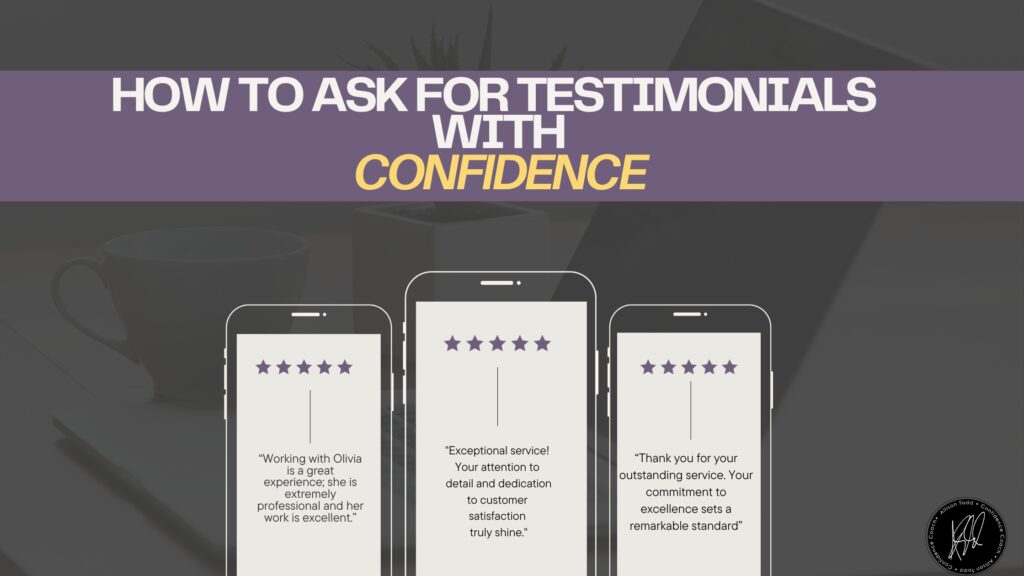Asking for Testimonials with Confidence: Your Path to Success
Hey there, fellow enthusiasts of personal and professional growth! If you’re reading this, it means you’re on a mission to boost your credibility and showcase your awesomeness to the world. Kudos to you! Testimonials are your golden ticket to building trust and proving your worth. But don’t fret if asking for testimonials feels a tad intimidating; we’ve got your back! In this blog, we’ll walk you through how to ask for testimonials with unshakable confidence and a dose of encouragement.
Step 1: Believe in Your Value
Before you embark on your testimonial-gathering journey, remind yourself of your incredible skills, dedication, and the value you bring to your clients or customers. Confidence starts with self-belief. You’re fantastic at what you do, and people should know it!
Step 2: Timing is Everything
The secret to a resounding “yes” is picking the perfect moment. Ask for a testimonial when your clients or customers are bubbling over with happiness about your work. Timing is key to capturing their enthusiasm.
Step 3: Craft a Heartfelt Message
Start with a warm and sincere message. Express your gratitude for their trust in your services or products. Let them know how much their feedback means to you. People are more likely to help when they feel appreciated.
Step 4: Keep It Simple
Don’t overcomplicate things. Make the process of leaving a testimonial a breeze. Offer clear instructions on where and how they can share their thoughts – whether it’s through email, a feedback form, or a review platform.
Step 5: Provide Guidance (But Keep It Open)
Sometimes, clients or customers might feel unsure about what to write. Offer some gentle prompts or questions to get their creative juices flowing. For instance:
- ~What was your biggest takeaway from our service/product?
- ~Would you recommend us to others, and if so, why?
- ~How has our product/service positively impacted your life or business?
Remember, you want their honest thoughts, so don’t dictate their words too much.
Step 6: Show Your Gratitude
When you receive a testimonial, don’t delay – send a heartfelt thank-you! Acknowledge their contribution and let them know how much it means to you. Gratitude creates a positive feedback loop.
Step 7: Put the Spotlight on Them
Once you’ve gathered a collection of stunning testimonials, shine a spotlight on your clients or customers. Showcase their words of praise on your website, social media, and marketing materials. Make them the heroes of your story.
Step 8: Keep the Momentum Going
Don’t stop at just one round of testimonials. Continue to gather feedback from your clients or customers on an ongoing basis. This keeps your testimonial bank fresh and demonstrates your consistent excellence.
Step 9: Respect Privacy and Preferences
Always seek permission before using someone’s testimonial, and be respectful of their privacy. Some may prefer to remain anonymous or share their testimonial without personal details. It’s crucial to honor their wishes.
Step 10: Embrace Growth
Lastly, use the feedback you receive from testimonials as a tool for growth. Constructive criticism is your friend. It’s an opportunity to refine your skills and enhance your offerings further.
Conclusion
Asking for testimonials with confidence is a journey of self-assuredness and celebration of your excellence. Remember, you’re doing the world a favor by letting your brilliance shine. People want to support those who exude confidence and deliver outstanding value. So, go ahead and ask for those testimonials with a smile on your face and a heart full of assurance. You’ve got this!
With the help of an experienced business coach, discover the keys to optimal performance, strategy, and expansion. Take a look around my website (click me) or go to allisontodd.com to get started on your path to a prosperous future right away!











